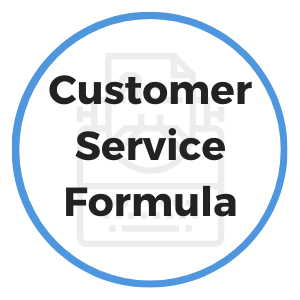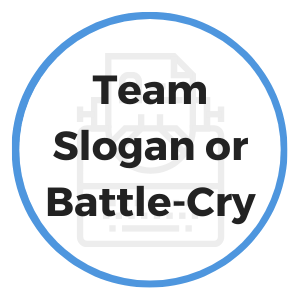- Home
- Customer Service Articles
- Customer Loyalty and Retention Strategy
Your Customer Loyalty and Retention Strategy In A Nutshell
Having a customer loyalty and retention strategy in place is critical to every successful business. Business owners know the importance of maintaining high customer service standards and having consistent oversight of the customer experience.
Although it takes time and effort to strengthen existing customer relationships and maintain customer loyalty, it costs considerably more to attract and acquire new customer relationships. Continually taking steps to add value to your current customer base is critical to securing a long-term successful business.
There many elements that contribute to a successful customer loyalty and retention strategy. For example, sales team members should be equally responsible for service, and service team members should be equally responsible for sales. Each employee should have a sales/referral goal and a service quality goal as part of their overall compensation plan. After all, a team that is in it to win it, needs to be a team that is all in - to win it together - as one amazing team.
For example, when a customer calls or walks into your place of business needing help with a service issue, the service employee can ask probing questions that might provide clues about additional customer needs. Taking that one extra step of asking questions let's the customer know you care and it opens the door for making a referral to a sales team member who can provide additional value to the customer.
Sales team members also have to be expert service providers. For example, if the customer let's a sales team member know about a service issue they are having, the salesperson needs to take ownership by getting the appropriate service associate involved to assist the customer, and then follow up to ensure the customer was satisfied with the service that was provided and to ask if there is any additional issues the customer needs assistance with.
Another important aspect of a successful customer loyalty and retention strategy is customer segmentation. Not all customers are alike and they don't all have the same needs, so it's critical that you deliver the level of service that meets or exceeds the expectations of that specific group. For example, you may have customers that you consider to be of higher value due to their level of purchasing power, influence in your community, or overall demographics. This group might require a bit more attention or hand holding that another group of customers.
"The easiest and most powerful way to increase customer loyalty is really very simple. Make your customers happy."
- Kevin Stirtz
To be clear, in all cases, the goal is to exceed customer expectations. However, you may need to invest more time and attention for one customer segment compared to another. Segmentation comes down to knowing who your customer is; what their needs and priorities are, and clearly understanding what is required to exceed their customer service expectations.
Investing in systems and technology to streamline the customer service experience is also important to a successful customer loyalty and retention strategy. More than ever before in history technology is rapidly changing and improving. Maintaining and upgrading systems is crucial to remain competitive, support the growth of the business, and ensure consistencies in achieving customer service standards.
Now let's discuss the most important element of any higher successful customer loyalty and retention strategy... see you in the next section.
What's The One Critical Element to Your Customer Loyalty and Retention Strategy?
You would think the answer to that question would be obvious, but believe it or not many business owners don't make the connection between employee retention and customer retention. These two metrics are unmistakably intertwined. When your employees are happy and satisfied with their place of employment they are more engaged at work and make every effort to be successful, which includes providing great customer service
So how do managers ensure higher rates of employee retention? First they must understand that in general, employees don't quit a company - they quit their manager. Managers must take time to connect with their subordinates, just as they tell their team members to take time to connect with customers. Your employees, in a very real sense, are your customers - and it's your job to serve them well, not the other way around.
If you take great care of your employees, they will take care of you and your customers in return, but you need to lead the way and set an example that inspires them to follow.
In a famous Gallop poll, past employees were asked why they left their company. The number one answer was that the employee felt that their supervisor was "indifferent" - meaning the employee didn't feel as if their manager cared about their well being. They made little or no effort to get to know them or connect with them one on one.
Too many managers fail to acknowledge any responsibility for an employee resigning their position with the company. Too often upon receiving an employee's resignation, a manager will fail to conduct a thorough employee exit review - they don't even try to connect the dots and understand the reason(s) for the employee's decision to leave.
"Every day we’re saying, 'How can we keep this customer happy?’ How can we get ahead in innovation by doing this because if we don't, somebody else will."
- Bill Gates
Upon learning about an employee's upcoming departure, many supervisors' first thought is how they are going to backfill the position without missing a beat in sales production. However, what they should also be carefully considering is how will existing customers perceive the news that this employee has left, and what will the customer's possible response be?
The loss of a valuable employee should be major consideration in your customer loyalty and retention strategy. If customers loved Joe Salesman and they learn that he just walked across the street to XYZ Company - odds are that at the first sign of a lapse in service, the customer will walk across the street looking for Joe.
Employees are the most important asset a business has. As the leader, it's your job to attract, hire, develop and retain great employees that are effective at taking great care of their customers. For some additional ideas on how to retain great employees, check out our article, Discover Effective Sample Recognition Programs That Work.
In conclusion, organizations that strive to have an effective customer loyalty and retention strategy should also have a clear strategy around maximizing employee retention. Make sure every leader in the company understands that employee retention, whether it's high or low, is a direct reflection on the quality of their leadership.





